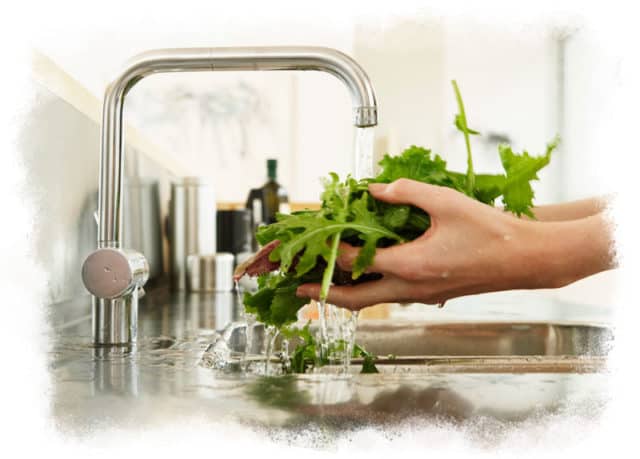There are lots of ways waste less food.
Composting is perfect for inedible food scraps like potato peels, or for those things that are beyond reviving. Both
meal planning and
meal prep can help you make sure you use the groceries you’ve purchased. Here are some more tidbits to tuck under your chef’s hat to help you maximize food use and minimize food waste.
Leftover Bread Recipes
No problem! Over a shallow pan, break your leftover bread into crumbs and allow to dry further. Mix in savory herbs and use in fish or crab cakes, or on top of baked mac and cheese. You can easily make homemade croutons too. Cut bread into chunks, mix melted butter with garlic (fresh or dried), parmesan, salt and pepper (or whatever your favorite spices are), pour over the bread, and bake at 350°F until they’re golden and crunchy. Allow to cool and freeze or store in an airtight container. A
French toast bake is another great way to use leftover bread.
Culinary Crisis: Easy Tricks to Save Food
Before you relegate some of those kitchen mishaps into the trash, try some of these handy tips. Burned the dinner? Remove the beans or stew from the heat, scoop the uncharred part of the meal into a new container and cover with a damp cloth for 10 minutes. This will help remove most of the burnt flavor. Over salted the soup? Try plopping a whole, raw, peeled potato in the pot of soup to absorb some of the salt. (Remove the potato before serving the soup.) Overcooked the veggies? Try puréeing the overdone veggies, adding some broth and turning the disappointment into delightful soup!

How to Save Vegetables
Floppy carrots, bendy broccoli or limp celery? You can revive many vegetables by soaking them in ice water for 5–10 minutes. Still lifeless? Go ahead and use them in a cooked dish—they’re still delish! Wrinkly tomatoes can be roughly chopped, sautéed in olive oil with salt, pepper and garlic, then served on pasta for a great meal in minutes!
Preserve Food in the Freezer
Your freezer is the perfect time machine for food, especially when you freeze in portions. Just remember to leave room for expansion on the more liquid foods like soups. Keep in mind too, that less air in the container or bag means less oxidation which will help you avoid freezer burn. Heading out of town? Try freezing anything you can and give what you can’t freeze to a neighbor or friend. And here is a really surprising tip, you can freeze eggs (though not in the shell)!
Check out our
Waste Less Tips for eight more great ways to rescue food in your own kitchen.
Did you know?
Food rescue is the practice of taking edible food, that might otherwise go to waste, from places like grocery stores and distributing it to local hunger relief agencies. We do this at all our stores and have donated more than 43 million pounds of food to local agencies since 2013. What can’t go to our food rescue partners gets diverted to feed cattle—25 million pounds of it! And, we’ve composted 5 million pounds of food scraps to help enrich the soil.


 VIEW ALL
VIEW ALL



